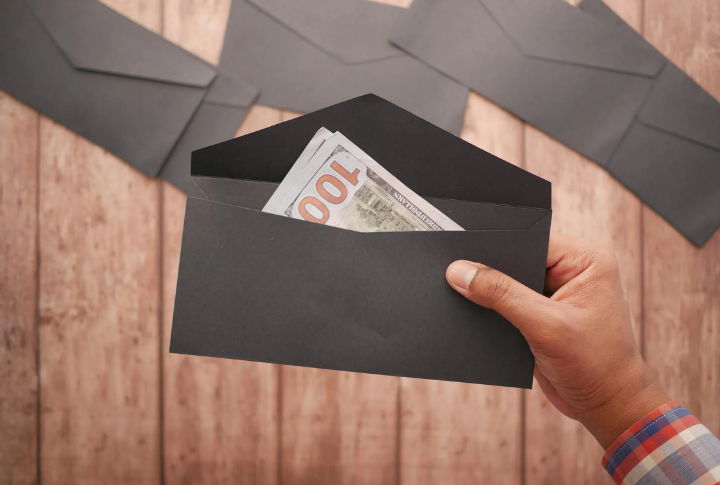What You Should Know About U.S. Savings Bonds

Saving money can feel uncertain—but savings bonds promise something different: patience rewarded with growth. Backed by the U.S. Treasury, they’ve earned the trust of generations. Want to know why they’re still a go-to for cautious investors? Here’s what you should know about U.S. savings bonds.
Government-Backed Security

Lending your money to the federal government sounds risky, but with savings bonds, it’s one of the safest investments around. The full faith and credit of the U.S. guarantees repayment plus interest, as it turns your purchase into a virtually no-risk financial anchor.
More From The Penny Hoarder: These Money Secrets Make You Look Rich (Without Wrecking Your Budget)
Types Of Savings Bonds

Series EE and Series I bonds serve different financial needs but share government backing. EE bonds grow at a fixed rate and are guaranteed to double in 20 years. In contrast, bonds adjust for inflation, making them a dynamic hedge against rising living costs.
Make money easier. Sign up for The Penny Hoarder’s newsletter today.
Interest Accrual And Compounding

Rather than earning interest in a static fashion, savings bonds reward patience. Each month sees new interest, and every six months, it’s compounded, meaning it’s added to your balance. That compound interest structure can significantly boost your returns over time.
More From The Penny Hoarder:Here’s How to Get Cheap Auto Insurance Without Cutting Coverage
Purchase Limits And Denominations

Thinking small? That’s okay. Savings bonds are available starting at just $25. If you prefer to go bigger, you can invest up to $10,000 in both Series EE and Series I each year. TreasuryDirect gives buyers flexibility without compromising security or growth potential.
More From The Penny Hoarder: How to Choose a Credit Card That is Right For You
Holding Period And Redemption Rules

You can’t cash out within the first year—that’s non-negotiable. Early redemptions within five years will cost three months of interest. However, after five years, there’s no penalty, making long-term holding both rewarding and more accessible for goal-oriented savers.
More From The Penny Hoarder: Credit Card Churning: A Smart Way to Earn Bonuses — or a Risky Game?
Tax Advantages

State and local taxes won’t touch your bond earnings. Plus, federal taxes on that interest can be postponed until you cash out or the bond matures. That deferral makes savings bonds a strategic option for tax-sensitive investors planning ahead.
More From The Penny Hoarder: Our Picks for The Best High-Yield Savings Account for This Month
Education Tax Exclusion

Are you paying for college with savings bonds? You might avoid federal tax on the interest. Qualifying depends on your income and whether the funds are used for approved education expenses, but for many families, it’s a smart financial and educational double win.
More From The Penny Hoarder:Budgeting 101: How to Budget Money
Electronic Vs. Paper Bonds

Paper savings bonds are now relics of the past. Starting January 1, 2025, all new bonds are issued electronically. TreasuryDirect users can track, manage and redeem their investments online, streamlining access and reducing the hassle of handling physical documents.
More From The Penny Hoarder:How to Pay off Credit Card Debt in 2025
Redemption Process

For digital bonds, redemption is as simple as logging into TreasuryDirect and initiating a transfer—most transactions complete within a few business days. Paper bond holders, however, must either visit a bank or mail the bond to the Treasury for processing.
More From The Penny Hoarder: How to Score the Best Cheap Tires Online and Save Big
Maturity And Interest Cessation

Interest doesn’t last forever—after 30 years, savings bonds stop growing. That means you should keep track of your issue date and redeem before the bond matures. Waiting too long risks leaving money on the table, especially in low-yield environments.
More From The Penny Hoarder: How to Access Your Paycheck Early: 4 Reliable Options
Gift Options

A savings bond isn’t flashy, but it’s a gift that teaches financial foresight. Set up via TreasuryDirect, gift bonds can be transferred to the recipient, including minors, which makes them a meaningful gesture for birthdays or financial milestones.
More From The Penny Hoarder: Real Ways to Finally Get Out of Debt Without Going Broke
Replacement Of Lost Bonds

Did you just misplace a paper savings bond? The Treasury can help, but you’ll need to fill out a claim form. Electronic bond holders won’t face this headache—TreasuryDirect keeps them securely stored, and that removes the risk of theft or misplacement.
More From The Penny Hoarder: The Top 0% Interest APR Credit Cards in 2025
Beneficiary Designations

If you’re planning ahead, designating a beneficiary ensures that your savings bond bypasses probate and goes directly to the person you’ve chosen. It’s a simple estate planning feature that adds peace of mind and smooths the process for your loved ones.
More From The Penny Hoarder: Our Picks for The Best Bank Promotions This Month
Inflation Protection With I Bonds

Not every investment keeps up with inflation, but I Bonds try. Their unique combination of fixed and CPI-tied rates means their yield adjusts twice a year. When inflation rises, I Bonds flex with it, shielding your purchasing power from erosion.
More From The Penny Hoarder: 6 Free Budgeting Templates To Help You Save In 2025
Guaranteed Returns With EE Bonds

The promise is bold but true—hold a Series EE bond for 20 years, and it’s guaranteed to double. That certainty is rare in the investment world and makes EE bonds particularly appealing for conservative, long-term savers looking to lock in future value.
More From The Penny Hoarder: How to Save Money on Groceries: 25 Tools and Tricks to Save $100 or More












